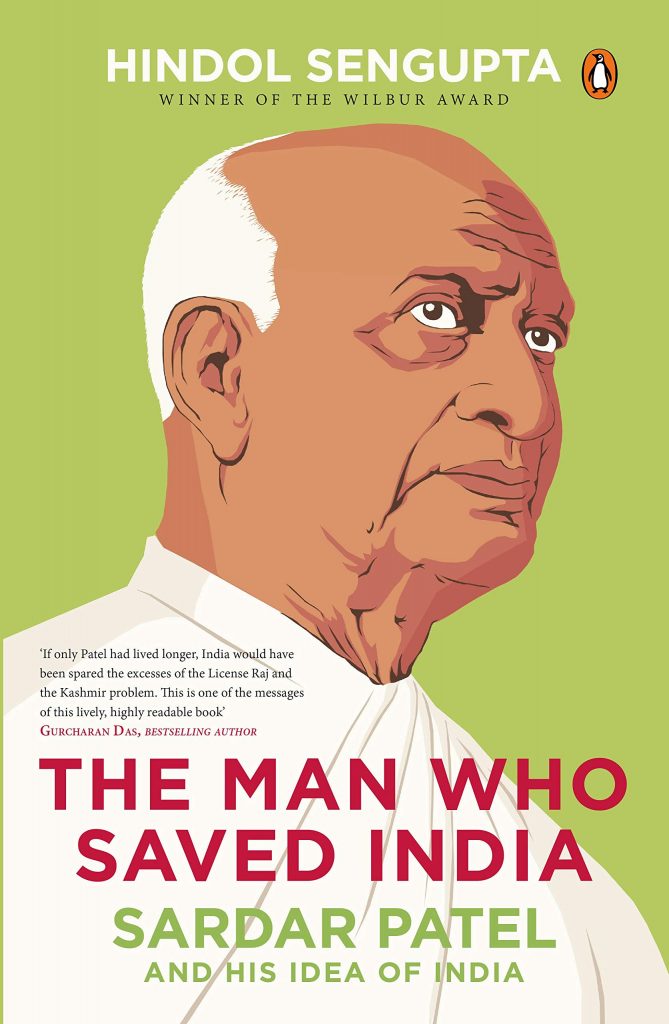
I listened to the audio version of ‘The Man who saved India, Sardar Patel and his Idea of India’ by Hindol Sengupta twice but there are a few howlers in the audio version of the book by the narrator.(e.g., he reads 1908 as 2008 etc). But this book certainly filled my “knowledge gap” about one of the great personalities in the Indian Freedom movement.
The book published in 2018 provides a detailed picture of life and times of Vallab bhai Patel, one of the trinity of freedom struggle spearheaded by Indian National Congress. As stated by Rajmohan Gandhi, another biographer of Patel, and as quoted in the introduction to this book while fulsome credit has been given to the other two, Gandhi and Nehru, the credit given to Patel has been niggardly. This book is invaluable to a student of modern Indian history, especially the story of Indian freedom movement from 1917 to 1947.
From a Feisty Barrister to a Political Activist and Organizer
The author traces the gradual evolution of Patel from a feisty barrister to a political activist and organizer, loyal Gandhian to a mass leader, astute negotiator and one of the greatest administrators of modern India. When Gandhi called off civil disobedience and non cooperation movement most congress leaders sulked and became inactive. But Patel kept the pyre of freedom struggle burning in various parts of Gujarat and Vidarbha. The pinnacle of his agitational leadership was the Bardoli satyagraha after the success of which Gandhi called him my ‘Sardar’ and this nickname stuck to him.
The author traces the gradual evolution of Patel from a feisty barrister to a political activist and organizer, loyal Gandhian to a mass leader, astute negotiator and one of the greatest administrators of modern India.
While Gandhi was in Jail and his political opponents in the Congress tried to overrule Gandhian diktats, it was Patel who strongly defended Gandhi and ensured such opponents did not succeed.
Flag Satyagraha in Nagpur organised by Patel was so successful that it caught the imagination of the entire nation. The author’s meticulous research has unearthed some new facets of the freedom struggle, the quarrels within the national movement and why the congress succumbed to the threats and violence of the Muslim league and conceded partition.
Integrating the Princely States
At times the book becomes tedious because of lengthy excerpts from reports and resolutions, it really catches the essential elements of various personalities involved during the final days of British rule. The last two chapters provide a rare insight into the problems of partition and Himalayan efforts made by Patel for integrating the princely states into the union of India. He persuaded, coaxed, threatened and deftly used the state machinery to convince the princes. When both Nehru and Mountbatten were reluctant to send the army to Hyderabad and Kashmir, it was Patel who stood firm and took the crucial decision.
As stated by Dr. Rajendra Prasad, the first president of India, “That there is today an India to think and talk about is very largely due to the statesmanship and firm administration of Sardar Patel.”
As stated by Rajmohan Gandhi, another biographer of Patel, and as quoted in the introduction to this book while fulsome credit has been given to the other two, Gandhi and Nehru, the credit given to patel has been niggardly.
Vallab bhai patel died on 15 December 1950. The Government of India headed by Nehru took to the path of socialism, state control of Industry and commerce and while professing non-alignment practically followed the soviet union. Patel was not a socialist . He wanted Industries and commerce to be developed by the private sector. He forewarned the nation about the intentions of China and Pakistan.
As lamented by the renowned author and commentator Gurucharan Das, “It is dangerous to put dreamers in power. Sardar Patel’s pragmatism was the perfect antidote to Nehru’s idealism in the early years of Independence. If only Patel had lived longer, India would have been spared the excesses of the License Raj and the Kashmir problem.“
Book: The Man Who Saved India (Audiobook)
Author: Hindol Sengupta
Publishers: Penguin Viking
Price: INR 879.00
SW Ratings: ***1/2
Advocate
